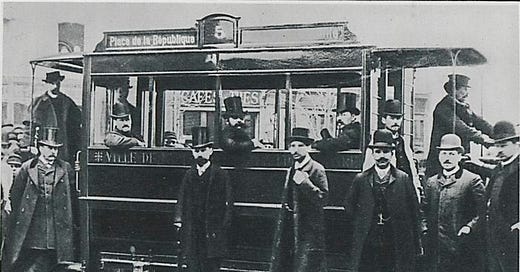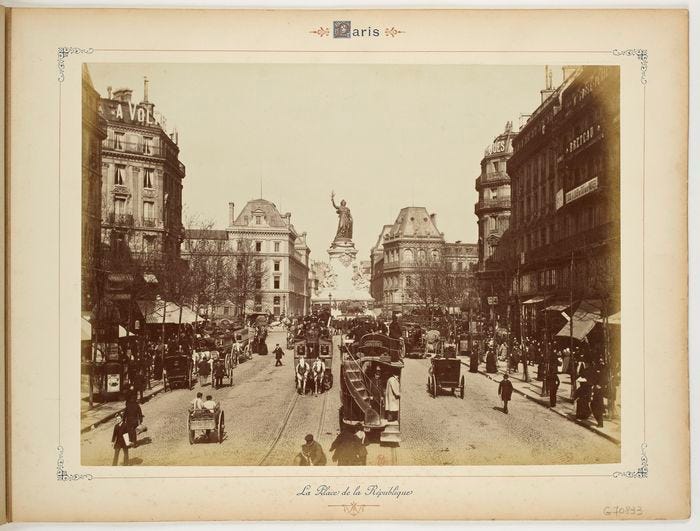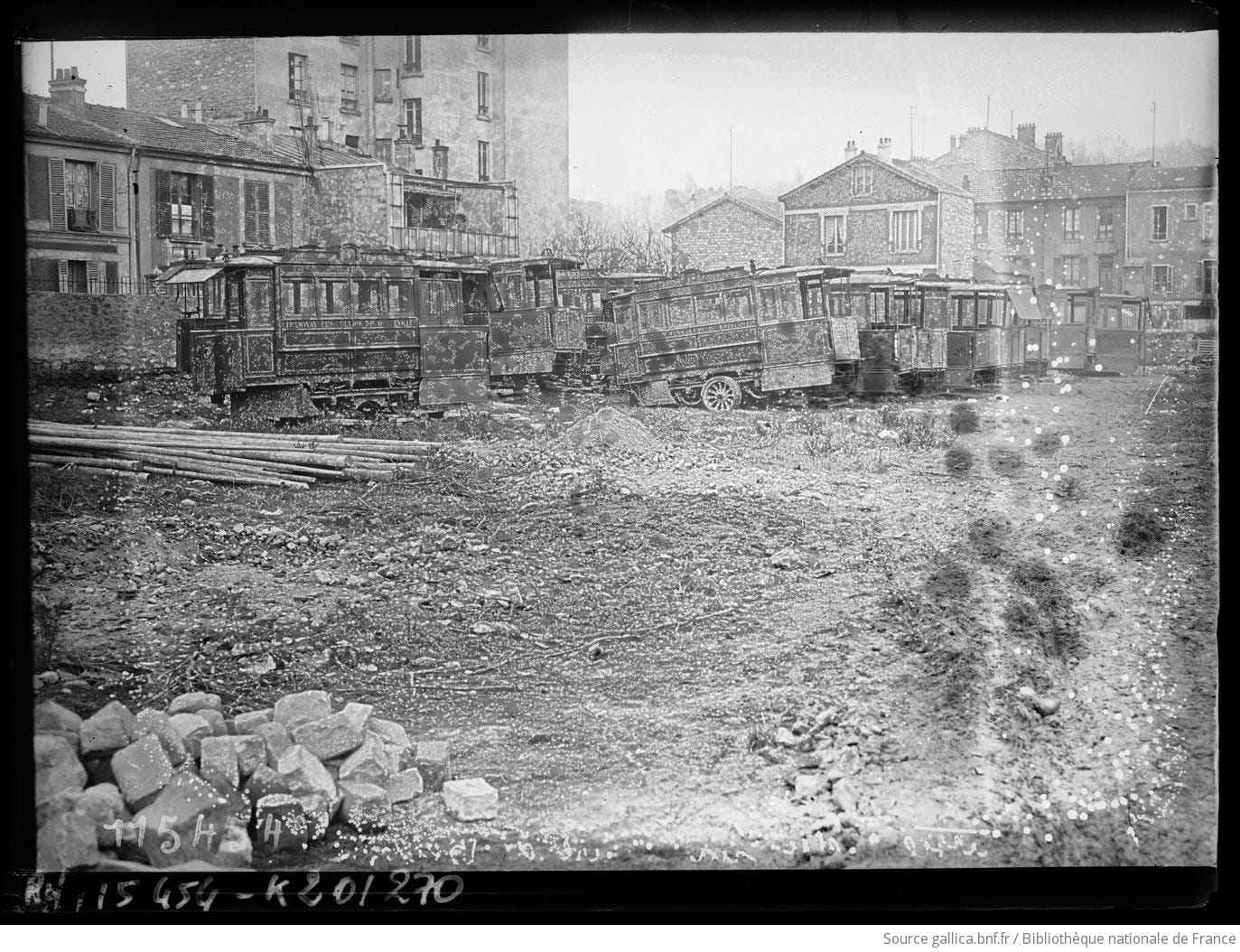Before the Paris metro was built...
...people took their lives in their own hands with the tramway
By now you may have figured out, Dear Readers, that I love to turn the pages of French history to dig up little gems to share with you.
This time, I have discovered several funny — though rather tragic — accounts of how dangerous the Paris tramway was before the metro was built.
Let me back up a little to set the scene.
Around 1887, the City of Paris started seriously looking into developing a tramway system. A tramway/cable car is a mode of transportation in which large, passenger-carrying vehicles are pulled along by cables that are embedded in the street.
Paris saw how a tramway, known as a funiculaire in French, was being used in places like San Francisco (successfully) and Edinburgh (not so successfully) and decided to try the same thing.
For this project, it chose the area of Belleville — shown on the map below outlined in red — to establish this new mode of transport.
Why Belleville?
During the second half of the 19th century, it was home to a growing population because it was cheaper than more central parts of Paris. The reason why so many people were moving there was because of an increase in jobs that coincided with the major reconstruction project, under Georges-Eugène Haussmann, to make Paris more livable. Construction workers and others made appeals to the city for better transportation into Paris.
Enter the Belleville funiculaire.
The tramway/cable car system was established in 1891, with the infrastructure designed by the father of the Paris metro, Fulgence Bienvenüe (what a name!). This tram line ran from the very central Place de la République to Belleville church, via Rue du Faubourg-du-Temple. It actually was a pioneer of this kind of transport in Europe.
At first there were 15 trams which could carry 22 passengers each. Later, two trams would travel together in a ‘train’ and could hold up to 57 passengers. At its height, around five million people traveled in them in one year.
Not long after it opened, local newspapers enjoyed making fun of the funiculaire for being unreliable or dangerous to ride on:
Why was it so dangerous? You see, Belleville is a very hilly area. The trams had to travel on very steep slopes, which could result in a snapped cable or other problems.
Several newspapers reported various accidents between 1891 and 1914. For example:
December 1891: a tram car came loose from its cable and rolled down Rue de Belleville and crashed into a car. 12 passengers were injured, 5 seriously.
January 1906: a tramway car lost control of its brakes as it was heading to Place de la République; panicked passengers were injured as they jumped out of the moving vehicle.
September 1913: an abrupt stop caused panic as passengers fell out of tram cars, injuring five people. Multiple people on the streets nearby were also knocked down during the fracas.
A particularly nasty accident was reported in a 1914 edition of Le Journal, in which the tramway’s cables got twisted and 40 people were injured:
Alas, somewhat good things cannot last forever. The last Paris tram stopped operating in 1924. It was replaced by buses and later, by metro line 11, which serves the area around Belleville. As for the cable cars themselves, they were sent to their final resting place at a ‘graveyard’:
Interestingly, I discovered that the Paris metro line 11 follows the exact same route between the République and Jourdain stations as the tram/funiculaire once did.
Cool, non?
Sources:
National Library blog about the Belleville tramway
Funicular Railways, Air Transport by A. Lévy-Lambert (BNF Gallica)











Another fascinating post -- I love all of the archives! Did you find everything online from the BNF?
Interesting. Metro looks better in many ways.